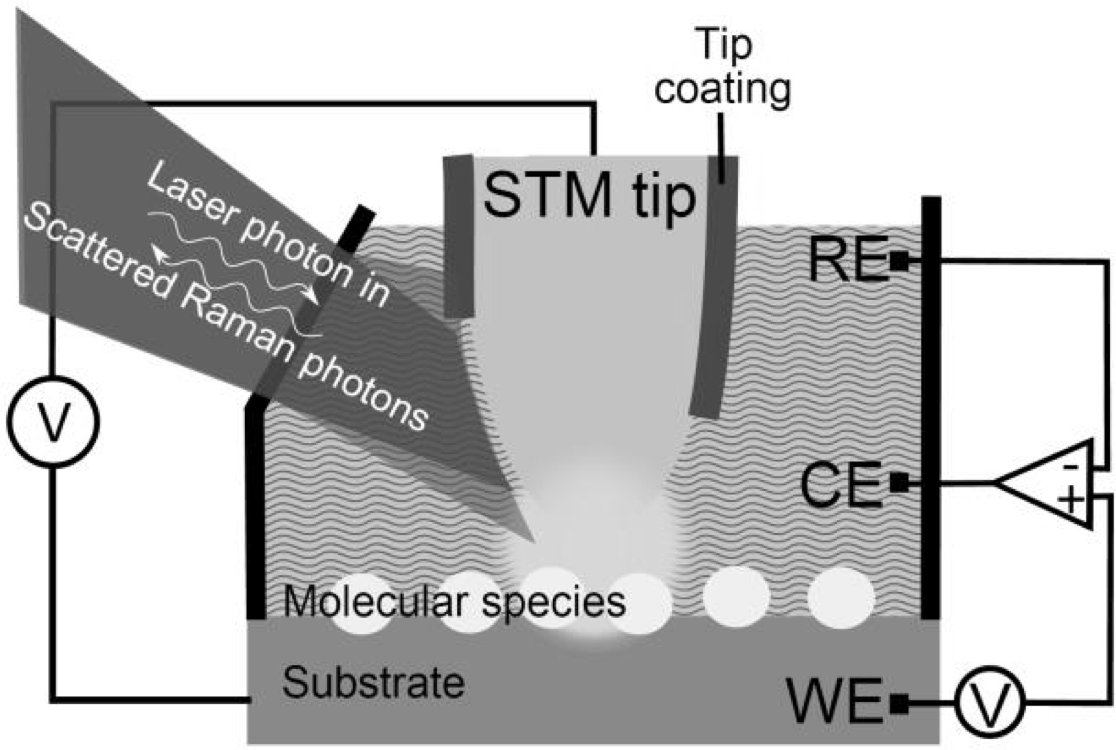




| 09:00-10:40 | Th1: Adsorbate and interface dynamics |
| 10:40-11:20 | Coffee break |
| 11:20-13:00 | Th2: STM-IETS and beyond |
| 13:00-15:30 | Lunch break (on your own) |
| 15:30-16:40 | Th3: Molecular films and 2D materials |
| 16:40-17:20 | Coffee break |
| 17:20-19:00 | Th4: Tip-enhanced vibrational spectroscopies |
| 20:30-23:00 | Conference dinner at Cofradía Vasca de Gastronomía, Old Town |
Chair: J. I. Pascual, San Sebastián, Spain
Contributed talk
A novel tool to investigate electrified interfaces on the nanoscale: EC-TERS
Max Planck Institute for Polymer Research, Mainz, Germany
A fundamental understanding of molecular processes that take place at electrified solid/liquid interfaces is highly desirable in view of the urgent demand of improved energy conversion or storage schemes. In order to characterize the complex interplay between substrate and adsorbate in the presence of an electrolyte on the nanoscale, we are developing a novel near-field Raman spectroscopy setup that provides local chemical fingerprint and topographic information with nanometer spatial optical resolution and (sub)monolayer sensitivity under well-defined electrochemical conditions (EC-TERS, Fig. 1).
A limited number of TERS studies at solid/liquid interfaces have been reported on optically transparent samples in transmission mode [1]. However, to support accurate potential control of opaque sample electrodes, reflection mode is required where great care has to be taken to ensure efficient light coupling to the tip despite beam aberrations. Our approach compensates aberrations through phase modulation of the laser beam, in this way correcting the focus point at the tip and recovering the Raman signal [2]. Proof-of-concept results show improvements in far-field and near-field Raman signals in water by a factor of 2-3 and thus sufficient signal intensity to conduct potentail-dependent TERS studies. This EC-TERS development paves the way for powerful in situ chemical nano-characterization of a wide range of electrochemical interfaces.

Figure 1: Schematic of EC-TERS setup to study electrified solid/liquid interfaces.
[1] T. Schmid et al., J. Raman Spectrosc. 40, 1392 (2009); A. Nakata et al. Anal. Sci. 29, 865 (2013)
[2] B. Gjonai et al., Applied Optics 51, 8034 (2012)